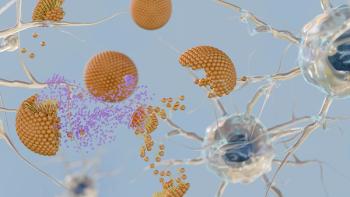
Novavax Licenses VLP Vaccine Technology to Spanish Company ROVI
Novavax (Rockville, MD) has entered into an initial agreement to license its virus-like particle (VLP) vaccine technology to Madrid-based ROVI Pharmaceuticals. Under a 60-million euro program sponsored by the Spanish Ministry of Health and other government agencies, ROVI will use the VLP technology to create a comprehensive influenza vaccine solution for the Spanish government, including an in-border vaccine manufacturing facility.
Novavax (Rockville, MD) has entered into an initial agreement to license its virus-like particle (VLP) vaccine technology to Madrid-based ROVI Pharmaceuticals. Under a 60-million euro program sponsored by the Spanish Ministry of Health and other government agencies, ROVI will use the VLP technology to create a comprehensive influenza vaccine solution for the Spanish government, including an in-border vaccine manufacturing facility.
Under several agreements currently being negotiated, ROVI will receive exclusive licenses to Novavax’s VLP vaccine technology to sell vaccines in Spain and Portugal, and non-exclusive licenses for Europe, Latin America, and Africa. A non-profit foundation, jointly sponsored by ROVI and the Spanish government, will be formed and initially funded with 25 million euros to support Phase 3 clinical development to achieve marketing authorization of the vaccines in the European Union by 2012. In addition, the State of Andalusia will support ROVI in building a new VLP vaccine plant in the city of Granada and bring it online in 2012. The plant is expected to have enough manufacturing capacity to service Spain and other parts of Europe, Latin America, and Africa.
Novavax produces its vaccines using recombinant baculovirus vector and insect cell culture to produce proteins specific to the emerging influenza strain that then self-assemble into an enveloped, non-infectious VLP. Using this technology, the company can prepare an influenza vaccine in only 10–12 weeks from the identification of a new viral strain, compared to approximately 20–24 weeks for traditional egg-based vaccine production methods.
The system’s high yields also make it possible to produce significant quantities of vaccine using only 1,000–2,000-L disposable bioreactors, which significantly reduces the time and cost of setting up and validating a new production facility.1
US Testing of the Technology in Conjunction with the NIH
In the US, meanwhile, Novavax is continuing to test its technology. In early June, Novavax signed an agreement with a division of the National Institutes of Health (NIH) to test Novavax’s VLP vaccine against the H1N1 influenza virus. The VLPs were created using the virus strain recommended by the Centers for Disease Control.
Under the agreement, the Division of Microbiology and Infectious Diseases (DMID) of the National Institute of Allergy and Infectious Diseases (NIAID), of the NIH, will fund the testing, which Novavax will conduct. The tests will include immunogenicity testing, to see if ferrets produce the desired immune response to the vaccine, and challenge tests to see if vaccinated animals demonstrate protection against the virus.
If the test results are good, the company believes it may be able to file an investigational new drug (IND) application to the US Food and Drug Administration in August, and begin clinical trials in October or November.
Rahul Singhvi, ScD, the company’s president and chief executive officer, said he is pleased that the NIH, which supported the company’s very first testing, is continuing to show interest in Novavax’s VLP technology. “As we continue to generate more data on this technology, they have shown continued interest and are supporting other products, including the H1N1 VLP vaccine,” he said.
1Robinson JA.
Previous coverage:
Newsletter
Stay at the forefront of biopharmaceutical innovation—subscribe to BioPharm International for expert insights on drug development, manufacturing, compliance, and more.




